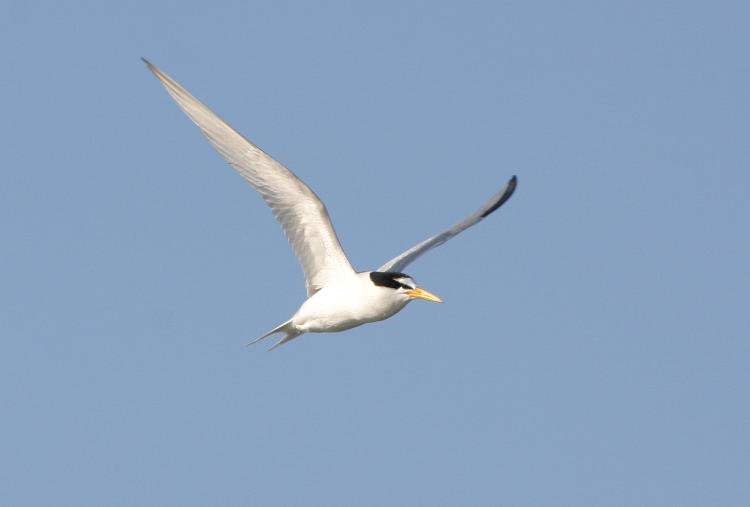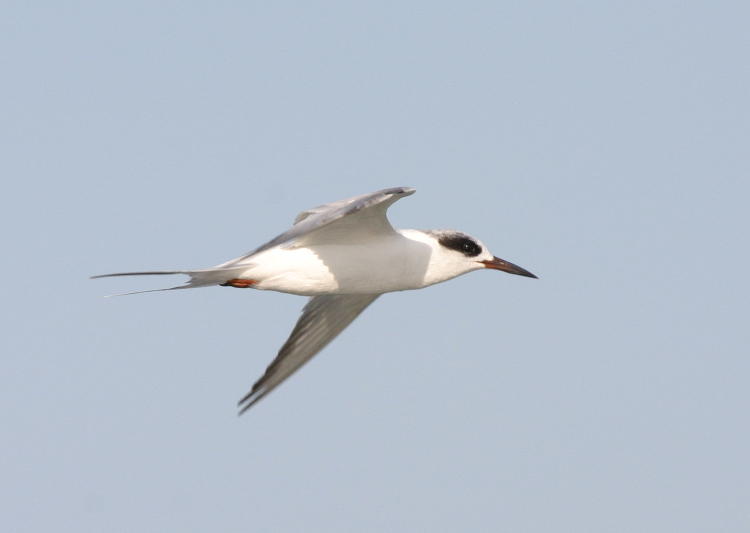
North Topsail Island is turning into a regular haunt for us, but years ago, I made a brief visit at the direction of a friend, since we were in the vicinity, and spent some time chasing the seabirds along the New River Inlet (and let me take this opportunity to chide people for ever using the name “New” for anything – what, do you think it’s never gonna get old or something? Hell, try to be a little creative at least.) The sky was clear, the sun was getting low but still bright and mostly behind me, and the birds were coming reasonably close – good conditions to do avian photography. One least tern (Sternula antillarum) in particular allowed me a nice sequence as it cruised along a predictable flight path. I don’t see terns very often, so I was happy to add it to my stock.
But now, take a look at the image below, shot in the same location and conditions not fifty seconds later, at only a slightly different angle.

I could challenge you to find the difference, but there are far too many. I can’t even be sure what species this is because many of them sport these same basic characteristics, with subtle differences visible only in areas that I didn’t capture, for instance the upper body and wing edges. It could even be a juvenile of the same species above it. What I’m drawing attention to, however, is the eye, specifically the bright reflection therein that’s called a catchlight. I’ve mentioned this multiple times before, but this is a goal of nature photographers quite often, because it gives a bit of distinction and ‘life’ to the eye, and in species where the iris is dark against dark plumage or fur, it lets you know where the eye even is. If you go back to the first photo, you will notice that it’s missing.
I just don’t know why. The sun angle should have been more than adequate, in fact ideal. There’s no reason to believe the eye is not actually reflective, especially since one of the frames in the sequence shows a catchlight. The only thing I can think of is that the shape of the skull is such that it flared just enough behind the eye to shield it from the sun, but that seems farfetched considering that the spot almost immediately ahead of the eye, where that little white bump is, is a highlight area, bleached out to pure white. Believe me, I’ve looked at that image at high magnification and even then the eye is almost impossible to distinguish.
It’s very easy to be in conditions that don’t contribute to a catchlight – many animals endeavor not to be in direct sunlight, and even when they are, it doesn’t take much of an angle to prevent it. And I imagine that this is intentional at least some of the time, since it means the sun is glaring into one of their eyes, which can’t help them with predator or prey. But I’d have every reason to believe those were optimum conditions up there and still didn’t get it. I feel cheated.




















































